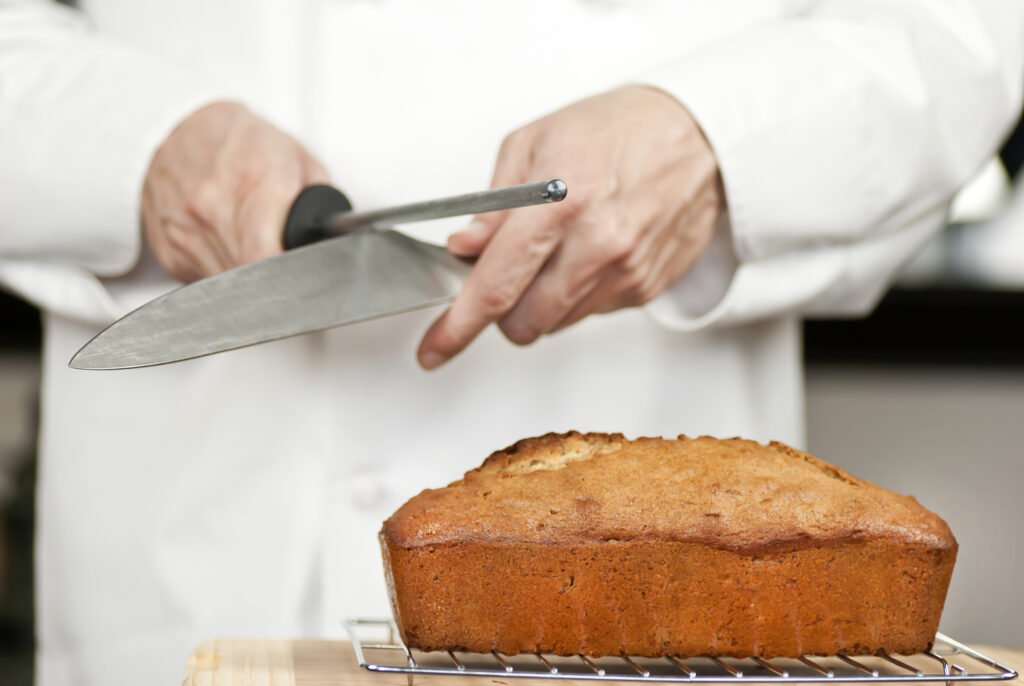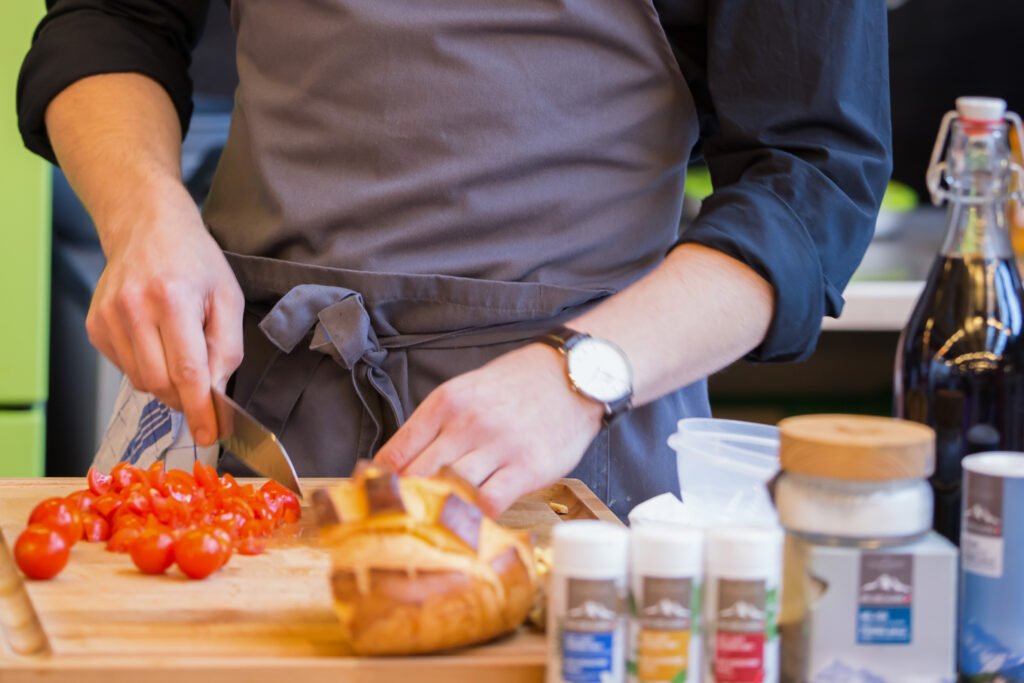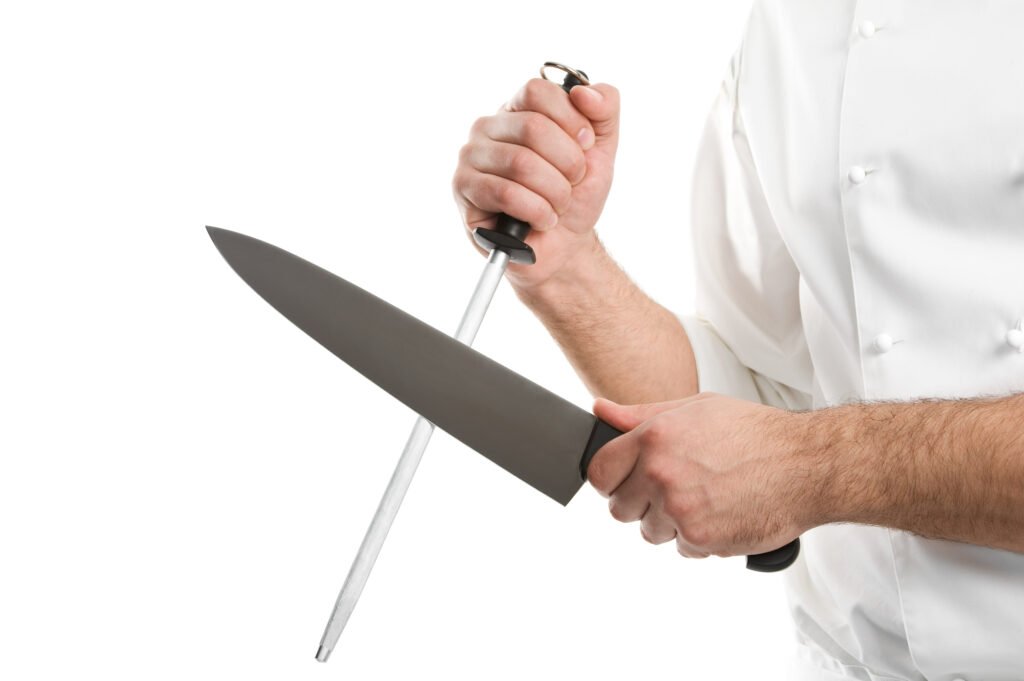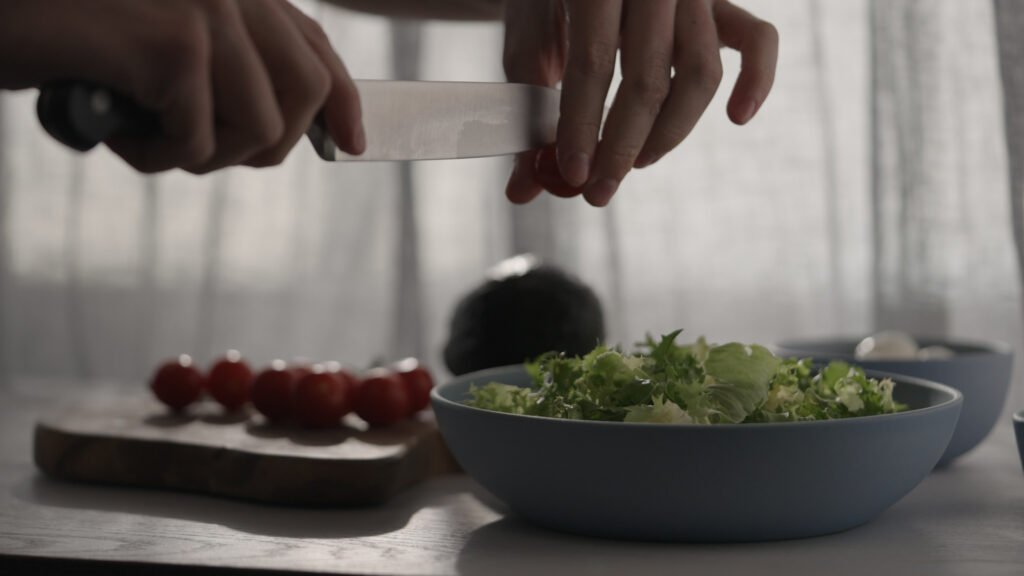Vegan Globetrotter is supported by our audience. When you purchase through one of our links, we may earn a small affiliate commission. As an Amazon Associate I earn from qualifying purchases. Your cost is not affected.
==================
Are you tired of struggling with a dull bread knife every time you try to cut through a crusty loaf? Don’t worry because the solution to your problems may be easier than you think. Contrary to what most people think, people can sharpen bread knives to reuse. In this post, we’ll talk about the best ways to sharpen your bread knife so you can cut bread with precision.
Can a Bread Knife be Sharpened?
Bread knives need sharpening because frequent use dulls the blade’s serrated edges. A dull bread knife can make cutting bread and hard. After all, serrations grasp and cut bread without tearing or crushing it. A dull bread knife can pull the bread, cutting even slices and wasting bread hard. When you sharpen the bread knife, it gets sharp again and works well. Hence, it lets it cut bread once more.

To sharpen a bread knife using a sharpening stone or honing rod, follow these steps:
Can a Bread Knife be Sharpened with a Sharpening Stone? Yes!
A sharpening stone can sharpen bread knives. But using the proper method is essential, so you don’t damage the knife’s serrated edge. Use a serrated knife sharpener or a professional for optimal results.
Use your own two hands.
- Start by washing the knife with soap and warm water, then drying it well.
- Place the sharpening stone on a stable surface and wet it with water or oil.
- Hold the bread knife at a 20-degree angle and drag the serrated edge across the stone. Work from the base of the serrations to the tip. Use light pressure and maintain the angle as you move the blade along the stone.
-
Repeat on the other side until all serrations are sharp.
-
Clean the knife and the sharpening stone well after sharpening.
Can a Bread knife be Sharpened with a Honing rod? Somehow.
Many say honing a bread knife with a honing rod or sharpening steel is not good. Bread knives feature serrated edges that need particular sharpening. A honing rod can straighten and keep a straight-bladed knife in good shape, but it can ruin serrations on a bread knife. Also, a professional or toothed knife sharpener should sharpen bread knives.
Still, it’s possible to do it.
- Warm water and soap to clean the bread knife, then dry it well.
- Hold the honing rod in your non-dominant hand and the bread knife in your dominant hand.
- Place the rod between the first serration and slide the knife down the length of the rod. Follow the curve of the serration.
- Please do this for each of the serrations until they are all sharp.
- After honing, clean the knife and the honing rod.
Sharpening stones are rougher than honing rods. Most of the time, people can use them more often to keep the serrations sharp. Sharpen a bread knife once a year or more often if used often.
Extra Tips For Sharpening a Bread Knife:
? Use the Right Tools
Ensure you have a sharpening stone or honing rod designed for serrated knives. Using the wrong tool can damage the blade.
? Start with a Clean Knife
Before sharpening, wash the knife with warm water and soap and let it dry well.
? Use a Gentle Touch
Pressure can destroy bread knives’ delicate serrations. Use a light touch when sharpening to avoid damaging the serrations.
? Maintain a Consistent Angle
Keep the angle of the knife consistent as you sharpen it. Most bread knives should have a 20-degree tip.
? Use a Lubricant
Lubricating with oil or water helps sharpen and protect the knife. Wet the sharpening stone or honing rod before use.
? Test the Sharpness
After sharpening, test the knife’s sharpness by slicing through a piece of bread. If the blade still feels dull, repeat the sharpening process.

Can a bread knife be sharpened? These methods will sharpen your bread knife for slicing baked goods.
Questions to Answer About Usage
The frequency of sharpening a bread knife depends on the usage and how often it gets dull. These are some broad tips for how often to sharpen your bread knife:
- How often do you use your bread knife? If you use it every day or several times a week, you may need to sharpen it more often.
- What type of bread are you cutting? Some bread is harder and denser than others, which can dull knife serrations faster. If you often cut hard or crusty bread, you may need to sharpen the blade more often.
- How sharp is the knife? Sharpen the blade if it tears or squishes bread instead of cutting it.
Generally, it’s a good idea to sharpen your bread knife at least once a year, even if you don’t use it much. This will help keep the serrations sharp and prevent the blade from becoming too dull. If you often use your bread knife, you may need to sharpen it every six months or even more often. Please pay attention to the sharpness of your blade and sharpen it as required. You can ensure it is always ready to cut through your favorite bread and baked goods.
More Tips to Maintain Bread Knife Sharpness
Keep the Knife in a Safe Place
When not in use, store your bread knife in a knife block, magnetic strip, or protective sheath. It will help prevent the blade from becoming dull or damaged.
Clean the Knife after Each Use
To get your knife ready to use, wash it in warm water with soap and let it dry completely. This will prevent any buildup of food or debris on the blade. It can cause the serrations to be dull over time.
Use a Honing Rod
Maintain the serrations’ alignment and sharpness with a honing rod. Keep doing it between sharpenings. Maintain the serrations’ alignment and sharpness using a honing rod. Keep doing it between sharpenings. Run the honing rod a few times along the length of the serrations on each side of the blade. It corrects bent teeth.
Avoid Cutting Hard Surfaces
Knife serrations wear down while cutting on hard surfaces. Hence, glass, ceramic, stone plates, and cutting boards can damage. Instead, use a cutting board made of wood or plastic to protect the blade and preserve its sharpness.
Only Use the Knife for a Task
Avoid using your bread knife for tasks other than cutting bread. The serrations can get damaged if you use them to cut through hard things or frozen foods. Also, the blade can get dull.
Use these methods to keep your bread knife sharp and effective. A sharp bread knife makes cutting bread and baked products easy.

Tips to Avoid Dullness and Maintain the Sharpness of your Bread Knife
- Put the knife away from danger. Store bread knives in a knife block or sheath to keep them sharp.
- Avoid cutting hard or frozen foods. Using a bread knife to cut through hard or frozen foods can damage the serrations and dull the blade. Instead, cut through these foods with a chef’s knife or other appropriate tools.
- Clean the knife after each use. Wash and dry the bread knife to maintain it.
- Use a cutting board. Use a cutting block to avoid dulling the blade on harsh surfaces.
- Sharpen the knife regularly. Sharpen the bread knife at least once a year with a sharpening stone or honing rod.
By following these tips, you can help prolong the life of your bread knife and ensure that it remains sharp and effective for years to come. Bread knives have a different blade design than other knives, primarily due to the unique challenges of cutting bread.
Key Reasons Why Serrated Blades are Ideal for Cutting Bread
1. Serrated Blades Grip the Bread
When you use a smooth blade to cut bread, it squashes the loaf, making it dense and difficult to eat. Serrated edges grab the bread’s crust and provide a clean cut without pressing it.
2. Serrated Blades Slice Through the Crust Easily
Bread loaves have a tough crust that can be difficult to cut with a smooth blade. Serrated blades can see through the crust without damaging the soft interior.
3. Serrated Blades Need Less Sharpening
You don’t have to sharpen them as often because they stay sharp longer than smooth blades. Each tooth lasts longer because serrations distribute cutting force.
4. Serrated Blades are Versatile
Bread knives are the standard tool for slicing loaves of bread. Its serrated blades can cut tough things like tomatoes and citrus fruits.
The unique design of a serrated bread knife blade makes it an essential tool for any kitchen. Jagged edges help cut bread or tomatoes faster, more straightforwardly, and precisely.

Sharpen A Bread Knife
FAQs
How should a good bread knife work?
From what I’ve seen, a good bread knife has a long blade with serrated edges that make it easy to cut through crusty bread without tearing or crushing it. Look for a knife with a handle that is easy to hold and gives you an excellent grip to cut with even pressure.
Is a bread knife essential?
Since I often bake my bread, a good bread knife is a must-have in the kitchen. You could technically cut your loaf with another knife, but a bread knife will make the job much easier and give you better results.
How do I keep my bread knife in good shape?
To keep your bread knife in great shape, you should clean and sharpen it often. Wash the blade with warm water and soap after each use and let it dry completely before putting it away in a safe place (such as in a dedicated knife block). You’ll also need to occasionally sharpen the serrated edge with a special sharpener or by sending it to a service that does that for you.



Don't miss out
when new recipes and information are added!
Join our newsletter for free recipes,
healthy living inspiration, and special offers
You have Successfully Subscribed!